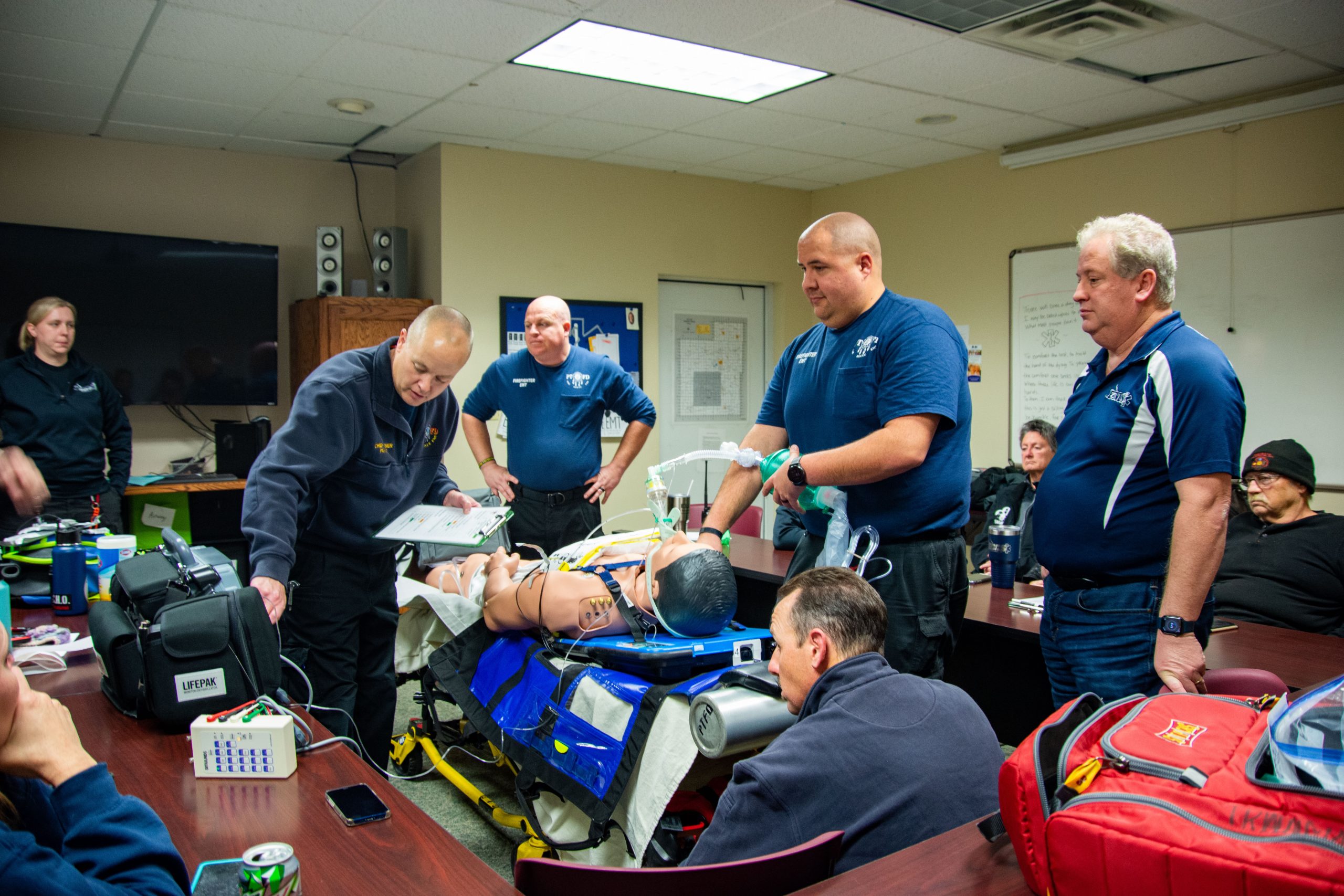The PBPN Tribal Fire Department implemented new cardiopulmonary resuscitation (CPR) procedures recently.
Advanced Cardiac Resuscitation (ACR) integrates machine-provided CPR with a set of proven treatments in a bundled approach to significantly increase neurologically intact survival rates for out of hospital cardiac arrest. Since receiving two AutoPulse mechanical CPR devices, Tribal Fire spends many hours training and refining their ACR protocol. Early results from the ACR program show great success—patients from three separate cases of cardiac arrest responded positively and were transported to the hospital with a pulse. One patient recovered without any apparent neurological impairment and was able to walk out of the hospital within a few days.
“The national average for out of hospital cardiac arrest survival rate is about 7.1 percent,” Fire Chief / Paramedic Doug Schreiner said. “Since implementing ACR here, our current save rate is 75 percent, with 25 percent neurologically intact.”
One of the first patients treated with ACR by Tribal Fire sustained no neurological damage, demonstrating the incredible impact that the technology and protocol can have on saving lives.
“We got called for someone having a seizure at the casino,” Lieutenant / Paramedic Bruce Coates recalled. “While myself and the ambulance were en route, they came back and notified us that the patient was in cardiac arrest, and the casino EMS staff was working the code blue.”
The patient went into cardiac arrest and collapsed on the casino floor in front of the EMS staff and Tribal Police. When the ambulances arrived on scene, the patient had received early defibrillation, oxygenation, and compressions from the casino paramedic and police officers.

Fire Chief / Paramedic Doug Schreiner leads the Potawatomi Tribal Fire Department’s Advanced Cardiac Resuscitation (ACR) demonstration at the monthly training meeting for Jackson County EMS in Holton, Kan., on November 15, 2022.
“We arrived, Tribal officers continued compressions, and the guy was being ventilated. We got the AutoPulse ready, I told the officer to stop, and I grabbed the patient and picked him up by the arms, put the AutoPulse behind the guy, and got it going, just as we trained,” Coates said.
The patient was delivered to the hospital with a pulse, and Tribal Fire was later informed that he had fully recovered, appeared neurologically intact, and was discharged shortly afterward. The combination of the early action taken by the casino staff and Tribal Police with the implementation of ACR equipment and protocol created the best possible chances for the patient’s survival.
Tribal Fire is one of the first agencies in the area to provide this premier level of resuscitation care. Chief Schreiner became interested in ACR after learning that the Douglas County Fire Department in Lawrence, Kan., adopted the approach and saw a dramatic increase in their rate of survival for out of hospital cardiac arrests. The results from Douglas County, as well as the early results from Tribal Fire, are consistent with national data showing ACR improves sudden cardiac arrest survival rates by tenfold.
ACR combines several elements and techniques into a high-level package of care approach: continuous, uninterrupted compressions utilizing an automated CPR device, passive oxygenation, regulating pressure to increase blood flow to the heart and brain, heads-up CPR, delayed defibrillation, and administering epinephrine when appropriate. This holistic approach results in higher rates of patient survival.
“I think one of the most exciting things about this new advanced cardiac resuscitation program is that it builds on the foundation that we already had built,” Chief Schreiner explained. “For multiple years now, we have had 911, we have had Emergency Medical Dispatch (EMD) trained dispatchers that can tell you how to do CPR over the phone, taught CPR here both in the community and within the government sector, we trained with advanced cardiac life support, we’re certified, we have paramedics—and even with that, our out-of-hospital cardiac survival rate was the national average, roughly 7 to 8 percent. The game-changer has been adding that bundle of care that we were able to put together with continuous machine-provided CPR. It’s perfect CPR, it never shuts off, and it maintains excellent pressures.”
In November, Tribal Fire also performed an ACR demonstration at the monthly training meeting for Jackson County EMS in Holton, Kan. Chief Schreiner led the demonstration and discussed past and future opportunities to work together in the field. The Tribal Fire Department works with Jackson County EMS through neighborly mutual cooperation, assisting each other when able. The ACR demonstration allowed Jackson County EMS to get acquainted with improvements and changes to Tribal Fire’s equipment and protocols, which could be useful in a future emergency.
In addition, some Jackson County EMS personnel expressed interest in potentially acquiring ACR equipment and training for their agency in the future.
As ACR continues to be implemented by the Tribal Fire Department and other agencies nationwide, cardiac arrest survival rates are expected to rise. Chief Schreiner pointed out that, even if only a few more lives are saved every year, the difference made by ACR will have a huge impact on a small community like the PBPN Common Land.
“I don’t see how this doesn’t become the standard in ten years,” Chief Schreiner said.
